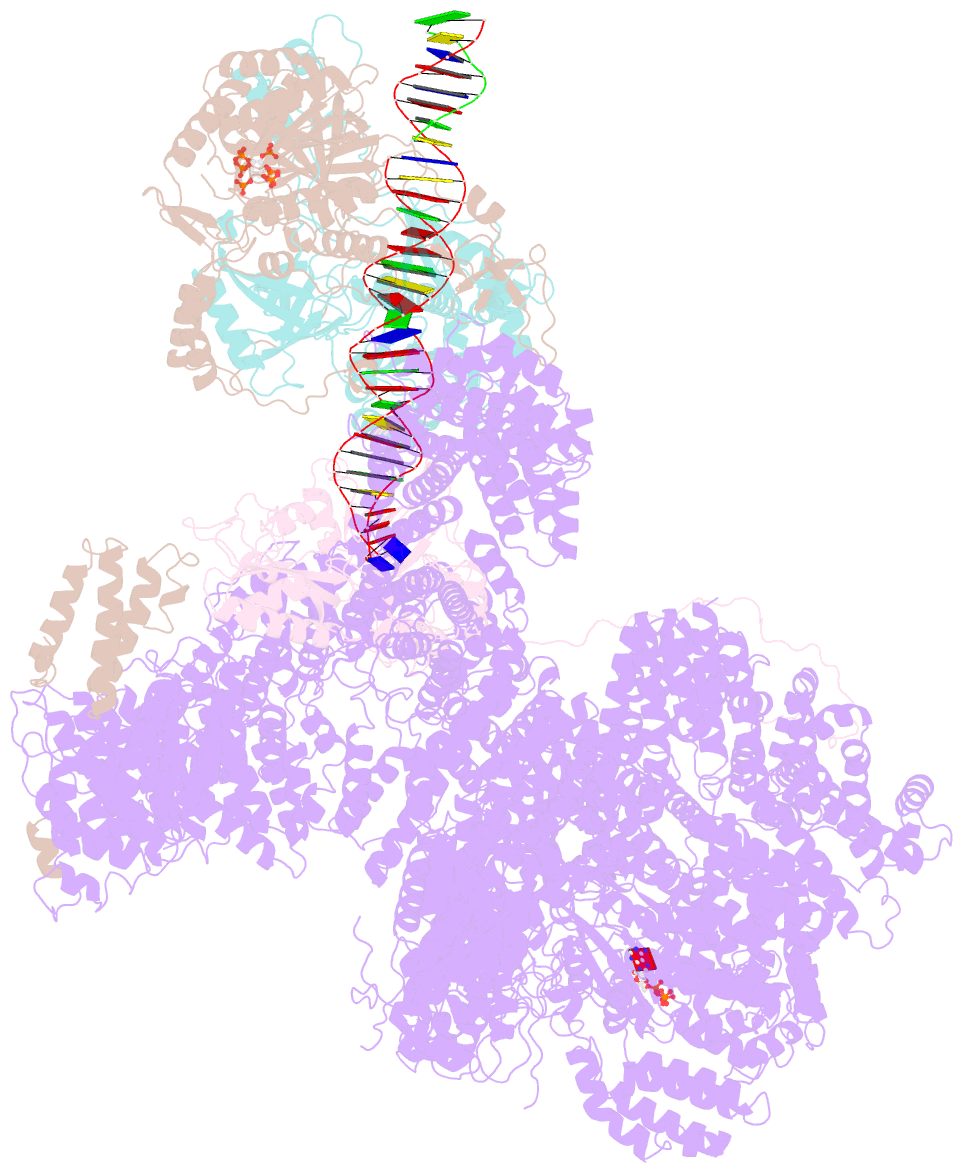Summary information and primary citation
- PDB-id
- 7sgl; SNAP-derived features in text and JSON formats;
DNAproDB
- Class
- DNA binding protein-DNA
- Method
- cryo-EM (3.0 Å)
- Summary
- DNA-pk complex of DNA end processing
- Reference
- Liu L, Chen X, Li J, Wang H, Buehl CJ, Goff NJ, Meek K, Yang W, Gellert M (2022): "Autophosphorylation transforms DNA-PK from protecting to processing DNA ends." Mol.Cell, 82, 177. doi: 10.1016/j.molcel.2021.11.025.
- Abstract
- The DNA-dependent protein kinase (DNA-PK) initially protects broken DNA ends but then promotes their processing during non-homologous end joining (NHEJ). Before ligation by NHEJ, DNA hairpin ends generated during V(D)J recombination must be opened by the Artemis nuclease, together with autophosphorylated DNA-PK. Structures of DNA-PK bound to DNA before and after phosphorylation, and in complex with Artemis and a DNA hairpin, reveal an essential functional switch. When bound to open DNA ends in its protection mode, DNA-PK is inhibited for cis-autophosphorylation of the so-called ABCDE cluster but activated for phosphorylation of other targets. In contrast, DNA hairpin ends promote cis-autophosphorylation. Phosphorylation of four Thr residues in ABCDE leads to gross structural rearrangement of DNA-PK, widening the DNA binding groove for Artemis recruitment and hairpin cleavage. Meanwhile, Artemis locks DNA-PK into the kinase-inactive state. Kinase activity and autophosphorylation of DNA-PK are regulated by different DNA ends, feeding forward to coordinate NHEJ events.





